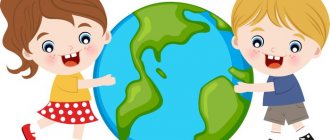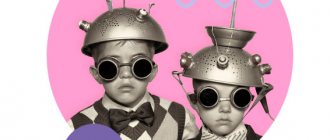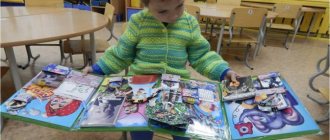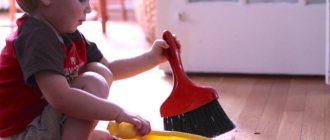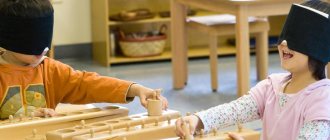I
QUARTER
(September – October – November)
Tasks
Systematization of knowledge about autumn (decreasing day length, lowering air temperature, birds flying away).
Deepening understanding of the diversity of living creatures inhabiting our planet (inhabitants of steppes and deserts - camel, marmot, jerboa, turtle).
Expanding ideas about the state of plants (modified stems, variety of colors of leaves, flowers, variety of fruits and seeds), about the adaptation of seeds to distribution.
Generalization of ideas about air and its properties (invisibility, transparency, movement, movement); about the respiration of plants, fish, other animals, and humans.
Consolidating knowledge about humans (nutrition, breathing, movements, feelings, reproduction and development), about the difference between humans and plants and animals (reasonableness, humanity, labor).
Visual recognition and transformation of geometric figures, recreating them according to presentation and description.
Indication of spatial relationships on a sheet of paper (by symbols); relationship in time (week, month).
Classification of objects and combining them into sets according to three or four criteria.
Comparison of groups of objects, numbers on a visual basis.
Determining the equality of several groups of objects by number (same, same number); inequalities (if one group of objects is larger, then the other...).
Serialization by quantity, size, volume, weight.
Quantitative relations in the natural series of numbers in direct and reverse order. The place of the number among other numbers in the series. Composition of the number of their two smaller numbers.
Independently inventing tasks, puzzles, riddles.
Artistic and creative activities
An idea of decorative art.
Creating three-dimensional and relief images using stamps and materials for attaching elongated, elongated shapes. Mastering origami-type design.
Development of children's imagination in construction from natural materials. Creating interesting crafts by composing and connecting various parts with wire, plasticine, glue, thread.
Formation in children of a conscious attitude to what they read, interest in the inner world of people, and the ability to treat some everyday situations with humor.
Children's use of explanatory and evidentiary speech in accordance with accepted norms of polite speech communication.
Physical development
Consolidation of the skills to walk and run easily, run, energetically pushing off from the support.
Development in games, relay races of speed, agility, and general endurance.
Instilling in children a desire to independently organize and conduct outdoor games and exercises with peers and children.
II
QUARTER
(December – January – February)
tasks
Generalization of ideas and typical winter phenomena in inanimate nature, establishing connections between air temperature and the aggregate state of water.
Expanding ideas about life in the Far North and in the tundra (weather, nature, wildlife - polar bear, seal, walrus, etc.); about human adaptation to life in harsh conditions.
Expanding ideas about human use of natural environmental factors: sun, earth, air, water, plants and animals - to meet their needs, strengthen and protect health.
Classification of geometric shapes according to the presence (absence) of features.
Independent drawing up of plans and diagrams. Definition and symbol of time relationships: day - week, week - month, month - year.
Comparability and relativity of quantities. Series by area, depth. Transition dependence: if the first quantity is comparable to the second, and the second – to the third, then the first is comparable to the third.
Determining dependencies when dividing a whole into parts: the more parts the whole is divided into, the smaller each part is, and vice versa.
Addition and subtraction, counting and counting by one when solving arithmetic problems, examples. Formulation of an arithmetic operation and how to perform it.
Organization of children's activities
In the preparatory group, the modern pedagogical and educational system, although characterized by the transfer of knowledge, skills or abilities through training, at the same time, it is capable of developing in children such an important quality as motivation to independently search for the necessary information, including any responsible activity.
The main property by which the quality and effectiveness of schoolchildren’s development can be determined is upbringing and learning through the joint activities of the child and the teacher. At the same time, the skill of independent activity is formed, which is identified as the main aspect for creating a successful personality.
With a properly configured pedagogical process, the teacher develops in the preschooler the desire to search for answers to this or that question that interest him, and also encourages curiosity in every possible way.
The teacher also allows the child to improve creative skills, with the help of which he can better cope with everyday problems.
Children's activity, removed from the participation of the teacher, manifests itself in any type of activity, including gaming, artistic or educational. Social and communication skills also develop, which improves the personality of the future individual.
The main types of independent activities in the preschool group:
| Variety | Implementation form |
| Gaming | The game process is the basis of any child’s activity, in which he is able to recreate a model of the external environment based on his creative abilities. It is especially important for the teacher to maintain play activity, which is well used in the educational process. So, children can act out various fairy tales, discuss stories or any other situations using toys. Play activities also improve the preschooler’s ability to interact correctly with other children or adults. |
| Cognitive | Research skills in the older group are most often at a good level in order to conduct independent experiments or observations. Thus, a preschooler can think about certain hypotheses, identify a question of interest, or predict the result in a particular case. It is interesting that the child’s research practice is as close as possible to the scientific approach. |
| Art and speech | An artistic activity is to create an interesting image using certain creative skills. Older schoolchildren can express various subjects in their fakes, while investing in them a hidden meaning or morality. Children use modeling, drawing with paints or pencils, and construction using various materials. Often a favorite form of interaction is the theatricalization of a specific plot or fairy-tale character. Therefore, children love various costumes, masks or face painting, which allows them to plunge into a fairy-tale world. |
| Motor | In this case, preschoolers independently organize various motor exercises, can draw up a schedule for implementation, and also learn performance techniques. The child also develops a competitive spirit, which is effective not only during physical activity, but also in life. |
| Labor | If children observe how a janitor works, a cook prepares food, and how a teacher maintains order in a kindergarten, they unconsciously try to imitate adults, which increases their sense of self-confidence and responsibility for a specific task. In this case, self-service skills also develop. |
Of all the above methods of organization, the most effective is the game type, which is present in absolutely all the described techniques.
At the same time, the teacher cannot abandon others in favor of a specific one, because only with the help of an integrated approach can the best results in education and upbringing be obtained.
Artistic and creative activities
Formation of ideas about the individual style of creativity of some artists, graphic artists, sculptors.
An idea of a portrait and its types (self-portrait, children's portrait, family portrait, etc.).
Mastering the methods of working with watercolors and gouache (wet and dry). Mastering the technique of multi-layer and openwork cutting is a more effective way to obtain multiple shapes. Mastering how to work with various tools: scissors, needles, rulers in construction from natural materials.
Using accepted norms of polite verbal communication in interviews (speaking not loudly, not loudly, listening carefully to the interlocutor, asking questions correctly, competently, constructing statements briefly or broadly, focusing on the task of communication).
Objectives of education and training in the preparatory group
TASKS OF EDUCATION AND TRAINING IN A PREPARATORY GROUP
Continue the comprehensive education and development of children, strengthen their health, and improve physical development. Develop cognitive interests, cultivate sustained attention, observation, develop interest in educational activities and the desire to study at school. Develop the ability to analyze and synthesize, self-control, and self-assessment when performing work. Based on expanding knowledge about the environment, cultivate patriotic and international feelings, love for the native land, the Motherland. To reinforce the idea that people of different nationalities live peacefully in our country. Continue to develop labor skills and abilities, cultivate diligence. Continue to improve all aspects of speech; teach children to use both short and common forms of answer, depending on the nature of the question posed, and to complement the statements of their comrades. Prepare children to learn to read and write. Continue to develop phonemic awareness and speech sound analysis skills. To develop the artistic and creative abilities of children in various types of artistic activities. Develop aesthetic perception, sense of rhythm, aesthetic appreciation, artistic taste, aesthetic attitude towards the environment, art and artistic activity. Continue to develop an interest in classical and folk art (musical, visual arts, literature, architecture). Develop organization, discipline, collectivism, respect for elders, caring attitude towards children, the ability and desire to independently unite for joint play and work, to help each other, evaluate the activities of peers kindly. Continue to develop skills in educational activities: listen carefully to the teacher, act according to the plan he proposes, as well as independently plan your actions, carry out the assigned mental task, and correctly evaluate the results of your activities.
Preparatory group for school (from six to seven years old). Age-related characteristics of children's mental development
In role-playing games, children of the seventh year of life
begin to master complex interactions between people, reflecting characteristic significant life situations, for example, a wedding, the birth of a child, illness, employment, etc.
Game actions become more complex and take on a special meaning that is not always revealed to adults. The playing space is becoming more complex. It can have several centers, each of which supports its own storyline. At the same time, children are able to monitor the behavior of partners throughout the playing space and change their behavior depending on their place in it. Thus, the child already addresses the seller not just as a buyer, but as a buyer-mother or buyer-driver, etc. The performance of a role is emphasized not only by the role itself, but also by the part of the playing space in which this role is played. For example, playing the role of a bus driver, a child commands passengers and obeys the traffic police inspector. If the logic of the game requires the emergence of a new role, then the child can take on a new role during the game, while maintaining the role taken previously. Children can comment on the performance of the role by one or another participant in the game.
Images from surrounding life and literary works conveyed by children in visual activities become more complex. The drawings become more detailed and their color range is enriched. The differences between the drawings of boys and girls become more obvious. Boys willingly depict technology, space, military operations, etc. Girls usually draw female images: princesses, ballerinas, models, etc. Everyday scenes are also common: mother and daughter, room, etc. With the right pedagogical approach Children develop artistic and creative abilities in visual arts.
The image of a person becomes even more detailed and proportional. Fingers, eyes, mouth, nose, eyebrows, chin appear. Clothing can be decorated with various details. Children in the pre-school group have largely mastered construction using building materials. They are fluent in generalized methods of analyzing both images and buildings; not only analyze the main design features of various parts, but also determine their shape based on the similarity with familiar three-dimensional objects. Free buildings become symmetrical and proportional, their construction is carried out on the basis of visual orientation. Children quickly and correctly select the necessary material. They quite accurately imagine the sequence in which the construction will be carried out, and the material that will be needed to complete it; are able to carry out constructions of varying degrees of complexity, both according to their own plans and conditions.
At this age, children can already master complex addition forms from a sheet of paper and invent their own, but they need to be specially taught this. This type of activity is not only accessible to children, it is important for deepening their spatial understanding.
Design from natural materials becomes more complicated. Children already have access to holistic compositions based on a preliminary plan, which can convey complex relationships and include figures of people and animals in various conditions.
Children continue to develop perceptions, but they cannot always take into account several different signs at the same time. Figurative thinking develops, but the reproduction of metric relationships is difficult. This can be easily checked by asking children to reproduce on a piece of paper a sample on which nine dots are drawn that are not located on the same straight line. As a rule, children do not reproduce metric relationships between points: when drawings are superimposed on each other, the points of the child's drawing do not coincide with the points of the sample.
Generalization and reasoning skills continue to develop, but they are still largely limited to visual signs of the situation.
Imagination continues to develop, but it is often necessary to note a decrease in the development of imagination at this age in comparison with the older group. This can be explained by various influences, including the media, leading to stereotypical images of children.
Attention continues to develop, it becomes voluntary. In some activities, voluntary concentration time reaches 30 minutes.
Children continue to develop speech: its sound side, grammatical structure, vocabulary. Coherent speech develops. Children's statements reflect both the expanding vocabulary and the nature of generalizations that are formed at this age. Children begin to actively use generalizing nouns, synonyms, antonyms, adjectives, etc. As a result of properly organized educational work, children develop dialogic and some types of monologue speech.
In the preschool group, preschool age ends. His main achievements are related to the mastery of the world of things as objects of human culture; children master forms of positive communication with people; Gender identification develops and the student’s position is formed.
By the end of preschool age, the child has a high level of cognitive and personal development, which allows him to successfully study at school in the future.
Physical development
Improving coordination of movements and balance. Fostering honesty, friendliness, and independence in the process of outdoor games and performing various physical exercises.
III
QUARTER
(March – April – May)
tasks
Generalization of ideas and typical spring phenomena in inanimate nature.
Expanding knowledge about the life of living beings in various ecological systems (forest, meadow, pond, park, vegetable garden); about the manifestations of positive and negative mutual influences of organisms in ecosystems.
Clarification of the basic rules of human behavior in ecosystems (“Red Book”; the possibilities of life in the environment of inanimate nature, among living organisms).
Selection by sample and by the name of objects of a certain shape. Transformation of geometric shapes according to conditions using a ruler, compass, templates, stencils.
Designation of spatial relationships on a plan, diagram; relationships in time (minute - hour, week - month, month - year).
Composition of a number from several smaller numbers. Adding and subtracting numbers (techniques of counting and counting by 2) when solving arithmetic problems. Find the next and previous number of each number from 1 to – 30).
Artistic and creative activities
Development of a consistent holistic artistic perception of works of art, the ability to express evidence-based judgments and evaluate what is seen.
Mastering the methods of applying different color spots: pen work, shading, shading, graphography; creating sketches.
The use of cutting techniques in plot appliqué in collective works; mastering the papier-mâché technique.
Improving skills in constructing three-dimensional crafts from ready-made paper patterns (reading symbols and accurately following them in operational maps).
Development of children's creative abilities in role-playing games based on literary plots, in dramatizations, dramatization and other types of performing activities.
Developing the ability to select the most interesting and significant events and episodes for creative stories, finding a suitable form of transmission, including descriptions of nature and the surrounding reality in the narrative.
Social and moral education
Forming an understanding that friendly relations between peers depend on the behavior of each child, the concept of the inadmissibility of indifference, ridicule, nicknames, etc. in relation to other children.
Reinforcing the rules of behavior with adults and peers, rules of behavior in public places (on the street, in transport, cinema), traffic rules, ways of addressing strangers.
Understanding of safety precautions when handling fire and electrical appliances; idea of basic assistance in case of injury, etc.
Awareness of your abilities in finding interesting types of work.
Tasks of organizing independent activities in the senior group
The independent activity of children in the preparatory group is characterized by the ability to solve many problems that will be especially useful in preparing for school.
The most effective of them are:
- Development of strong-willed and motivational qualities . In this case, the child develops psychological stability, which allows him to be protected from various factors from the external environment: someone else’s opinion, extraneous noise or voices, criticism addressed to him. All this allows you to develop a skill in which the child will bring his activities to their logical conclusion. In older groups, this task allows you to create the necessary conditions for the formation of the skill of self-analysis, as well as value judgments for certain actions.
- Development of self-regulating processes. The preschooler learns to accurately calculate the percentage of energy spent on performing certain actions, and also understands the need to change activities or have rest. From the age of 5-6 years, the child begins to develop important physiological processes in the nervous system, which develops perseverance, concentration, as well as a positive reaction to constructive criticism and comments.
- Formation of an important ability to independently construct an algorithm of actions. In this case, the child learns to build a detailed plan for research, play, work or observation activities without outside help. The importance of having friendships with both children and adults also develops.
- Development of social and cultural qualities through various games, which are based on a plot-role interaction technique. A good example is the game activity “Hospital”, “Shop”, “Bank”, which makes it possible to learn more deeply about certain features of different activities.
- Strengthening independent skills . In this case, the child learns various actions that are aimed at undressing and dressing, maintaining etiquette, personal hygiene or cleanliness of the kindergarten. Such things should be done automatically, without the participation of educators. There is also the development of independence through the implementation of various instructions from the teacher. Such education improves conscientious behavior towards preschool employees on duty.
Based on the tasks described above, the preschooler develops play, artistic and speech, cognitive, as well as social and communicative activity.
In addition, the teacher can help improve work activity, so that the child will strive to help elders in everything - from cleaning the kindergarten territory to caring for flowers.
Washing doll clothes is an example of developing labor skills when organizing independent activities for children in a preparatory group
The independent activity of children in the preparatory group is a particularly important personality trait, which is characterized by an increased desire to quickly and effectively solve certain problems, without outside help from an adult.
This personal trait allows one to increase criticality, initiative, and also develop the most adequate self-esteem in a child.
